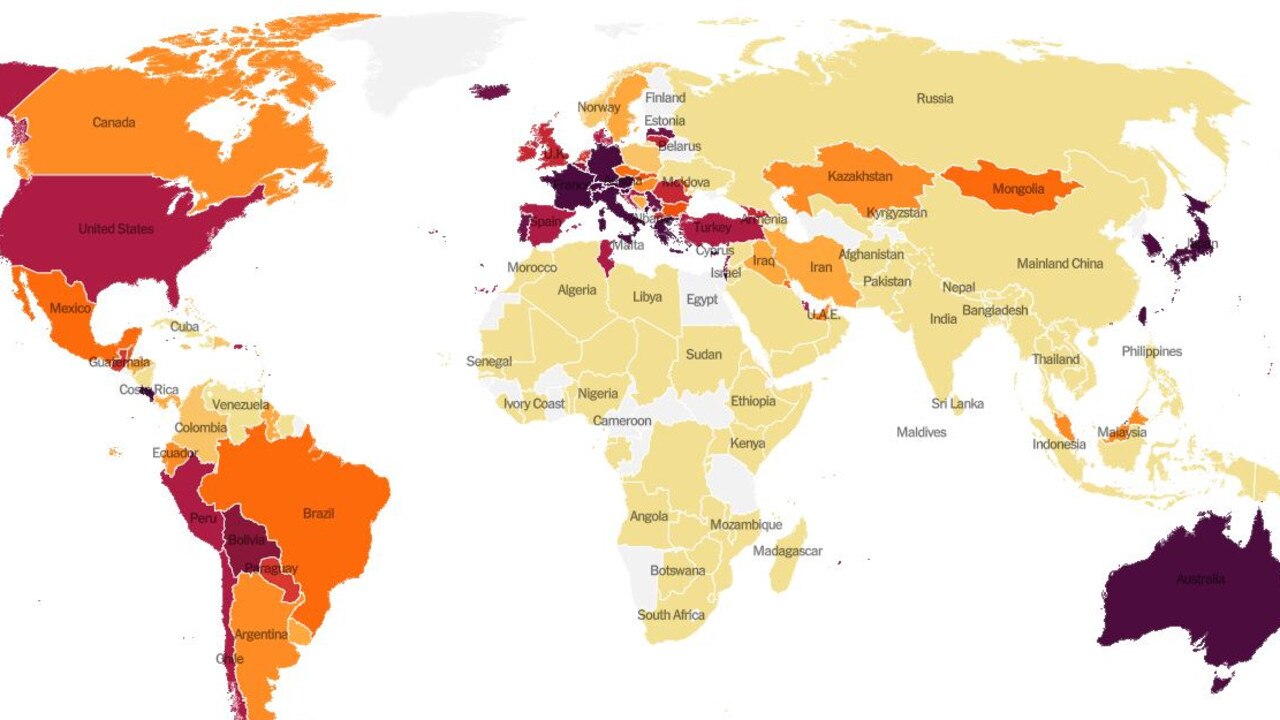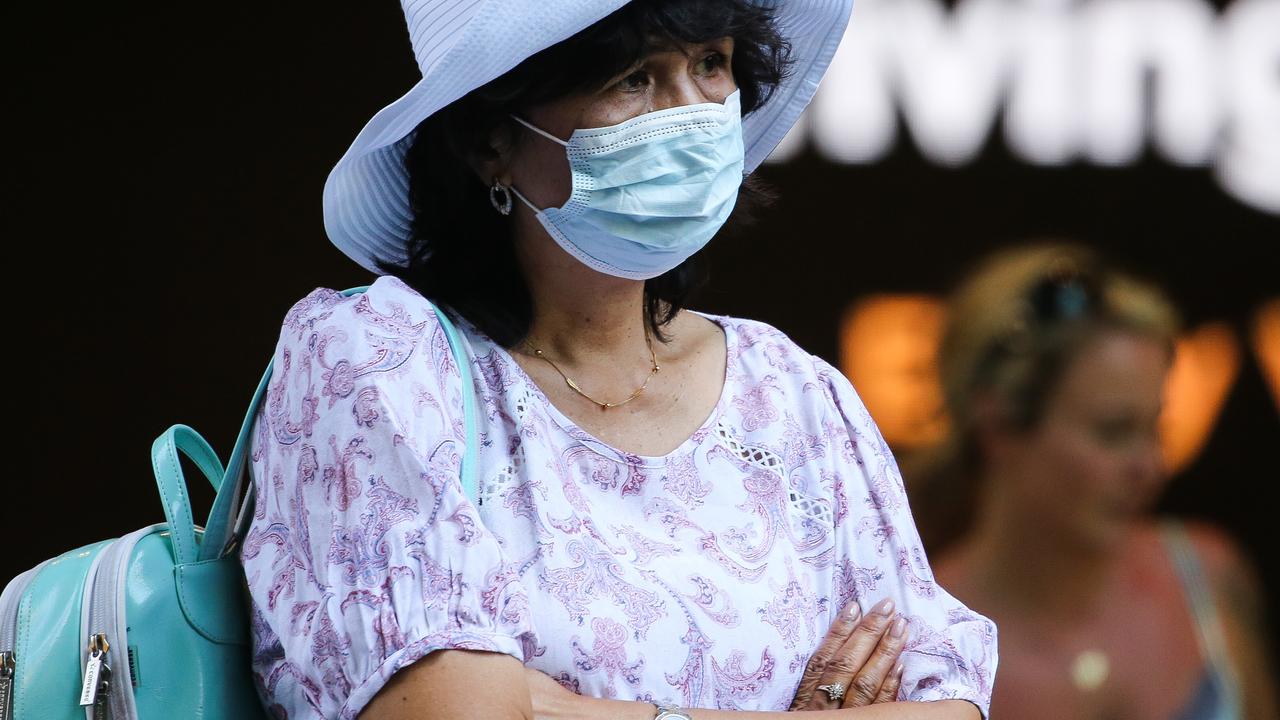Australia is now a ‘hotspot’ for Covid infections, but one statistic shows we are actually better off
A unsettling map shows that Australia is one of the world’s current Covid hotspots. But it doesn’t show some good news.
The pandemic is showing no signs of slowing down, with Australia currently averaging just over 47,000 positive cases of Covid per day, but it’s not all bad news as one trend reveals we’re better off than other countries.
When looking at Covid hotspots across the globe, Australia is sitting close to the top end of the spectrum as cumulative positive cases since the beginning of the pandemic tick over nine million.
In the last week, more than 55,000 positive cases were reported across the nation, bringing the total number of active cases to 371,000.
As this map from The New York Times shows, Australia is one of the world’s current Covid hotspots, if one measures daily cases per 100,000 residents.

We are currently experiencing an average of about 180 cases per 100,000 residents each day. By comparison the United States, with the world’s highest death toll, is at 38.
In terms of Australia’s death toll, 11,134 have died due to Covid, and the number of deaths each day is accelerating.
“That is because we‘ve got Omicron happening at the moment but also possibly, because we were successful with zero-COVID … so we’re playing a little bit of catch up,” said University of Melbourne epidemiologist Tony Blakely.
In comparison to other countries, the death rate remains relatively small. Australian National University (ANU) infectious disease expert Professor Peter Collignon says that is the figure we should be focusing on.
“You will note that Australia, and other highly vaccinated countries, despite large numbers of cases, have relatively low death rates,” Dr Collignon tweeted.
You need to look at the middle panel in the upper part of the graphic you sent. It shows deaths, the most important parameter in my view. You will note that Australia, and other highly vaccinated countries, despite large numbers of cases, have relatively low death rates. https://t.co/SdBVPo4L8A
— Peter Collignon (@CollignonPeter) July 24, 2022
South Korea, where 86 per cent of the population is fully vaccinated, averages over 60,000 cases per day, but like Australia, its death toll is considered low at 24,855 people.
Meanwhile the US has recorded well over one million deaths, with the total number of cases exceeding 90 million.
How countries handled the outbreak, when cases peaked and vaccination rates all play a role in these numbers, Prof Blakely told news.com.au.
“An important thing not to lose sight of is that the cumulative death toll from Covid in Australia is much less than most other countries because we didn’t take that massive hit in 2020 and early 2021,” he said.
“So you know, we’ve gotten through this pandemic quite … well, we haven’t had the massive excess mortality that other countries have had.”
While Australia may be better off, we’re not out of the woods just yet as health experts expect the number of positive cases to peak in August.
“We are not yet at the peak of infections and our health systems are already feeling the strain,” Deakin University Associate Professor of epidemiology Hassan Vally told NCA NewsWire.
“Europe and the UK both experienced similar challenges during their winter, and it is clear that we are going to have to do everything that we can to slow down virus transmission over this challenging period.”
Prof Blakely expects that the number of deaths will continue to increase in line with case numbers, with the effects to be seen up to three weeks post the peak.
Additionally, with added pressure on the hospital system, the death rate for conditions other than Covid, such as heart attacks, may rise if there aren’t enough medical resources to keep up with demand.
“If people are getting delayed, and then transferred from the ED (emergency department) and into the ICU, then that may push the death rate up a little bit,” Prof Blakely said.

Death rates being lower in highly vaccinated countries goes to show the impact vaccinations are having in managing the virus.
Professor Blakely said the risks of dying from Covid can be “enormously reduced”, by as much as 95 per cent.
“As best we can tell, and it‘s not easy, Omicron BA. 4 and BA. 5 are equal in virulence to the previous variants of Omicron,” he said.
“Even if vaccination doesn‘t stop the infection too much, it reduces your chance of death by that much.”
Comorbidities such as respiratory disease, liver disease, severe asthma and diabetes among other conditions are factors which may increase someone’s risk of dying from the virus.
Dr Vally said Australians should implement past practices to delay transmission and protect those who are most vulnerable.
“We need to put in practice everything that we have learnt over the past couple of years, which include practising social distancing where we can, wearing high quality masks, practising good hygiene, avoiding crowds and working from home where we can,” he said.
“Most important of all, we need to make sure we are up to date with our Covid vaccinations and if you are eligible for a booster now is the time to get it.”
– with Angie Raphael






